Olive Woodpecker
Posted: Fri Mar 14, 2014 11:43 am
488. Olive Woodpecker Dendropicos griseocephalus (Gryskopspeg)
Order: Piciformes. Family: Picidae

Description
20 cm. The Olive Woodpecker is the only woodpecker in the Southern African region that is not speckled, and has plain olive green plumage with a bright red rump patch and a grey head and throat. Legs and feet are greyish-black; bill is black; eyes are dark red. Both sexes of the Olive Woodpecker lack any distinctive facial markings.
The male has a red crown and grey head, while the female’s head is entirely grey.
Juvenile is duller olive green but immature males have a reduced red crown spotted with black.
Race D. g. ruwenzori (Zambezi) has red belly and plumage is gold-tinged.
Habitat
Evergreen forests, forest margins and nearby woodlands and well-wooded suburban gardens.
Distribution
It has two isolated subspecies in Africa - one in Central Africa and the other in the southern and eastern parts of South Africa.
It is found in Angola, Burundi, Democratic Republic of the Congo, Malawi, Mozambique, Namibia, Rwanda, South Africa, Swaziland, Tanzania, Uganda, Zambia, and Zimbabwe.
Taxonomy
Dendropicos griseocephalus has three subspecies:
Namibia to Zaire, Uganda, Tanzania, Zimbabwe and Malawi: D. g. ruwenzori
Humid montane forests of Tanzania: D. g. kilimensis
Extreme southern Mozambique to eastern and southern South Africa: D. g. griseocephalus
Diet
Olive Woodpeckers feed mainly on insect larvae and pupae which they extract from under the bark of the trees in which they feed. Their strong beaks and long barbed tongues are well adapted to this task.
Breeding
Olive Woodpeckers are monogamous and nest in holes which they excavate in dead trees, usually well above the ground. Both sexes excavate the nest. Egg-laying season is from August-November, peaking from September to October. The female lays a clutch of two or three white eggs that are incubated by both sexes for roughly 15-16 days. The chicks are cared for by both parents, leaving the nest at about 24-26 days old. The juveniles return to the nest to roost for about 3 months, after which they become fully independent. hatch after an incubation period of approximately 15 days.
The nest may be parasitized by the Scaly-throated Honeyguide.
Call
The call of the Olive Woodpecker, uttered by both sexes, is a loud wee-rit, wee-rit, wee-rit. Listen to Bird Call.
Status
Fairly common resident.
Order: Piciformes. Family: Picidae

Description
20 cm. The Olive Woodpecker is the only woodpecker in the Southern African region that is not speckled, and has plain olive green plumage with a bright red rump patch and a grey head and throat. Legs and feet are greyish-black; bill is black; eyes are dark red. Both sexes of the Olive Woodpecker lack any distinctive facial markings.
The male has a red crown and grey head, while the female’s head is entirely grey.
Juvenile is duller olive green but immature males have a reduced red crown spotted with black.
Race D. g. ruwenzori (Zambezi) has red belly and plumage is gold-tinged.
Habitat
Evergreen forests, forest margins and nearby woodlands and well-wooded suburban gardens.
Distribution
It has two isolated subspecies in Africa - one in Central Africa and the other in the southern and eastern parts of South Africa.
It is found in Angola, Burundi, Democratic Republic of the Congo, Malawi, Mozambique, Namibia, Rwanda, South Africa, Swaziland, Tanzania, Uganda, Zambia, and Zimbabwe.
Taxonomy
Dendropicos griseocephalus has three subspecies:
Namibia to Zaire, Uganda, Tanzania, Zimbabwe and Malawi: D. g. ruwenzori
Humid montane forests of Tanzania: D. g. kilimensis
Extreme southern Mozambique to eastern and southern South Africa: D. g. griseocephalus
Diet
Olive Woodpeckers feed mainly on insect larvae and pupae which they extract from under the bark of the trees in which they feed. Their strong beaks and long barbed tongues are well adapted to this task.
Breeding
Olive Woodpeckers are monogamous and nest in holes which they excavate in dead trees, usually well above the ground. Both sexes excavate the nest. Egg-laying season is from August-November, peaking from September to October. The female lays a clutch of two or three white eggs that are incubated by both sexes for roughly 15-16 days. The chicks are cared for by both parents, leaving the nest at about 24-26 days old. The juveniles return to the nest to roost for about 3 months, after which they become fully independent. hatch after an incubation period of approximately 15 days.
The nest may be parasitized by the Scaly-throated Honeyguide.
Call
The call of the Olive Woodpecker, uttered by both sexes, is a loud wee-rit, wee-rit, wee-rit. Listen to Bird Call.
Status
Fairly common resident.
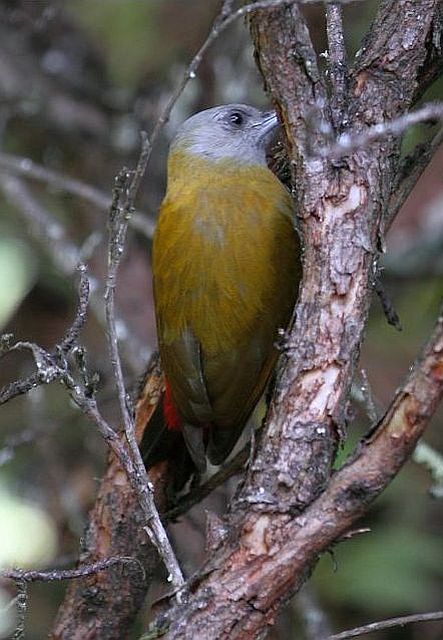 © Sharifa
© Sharifa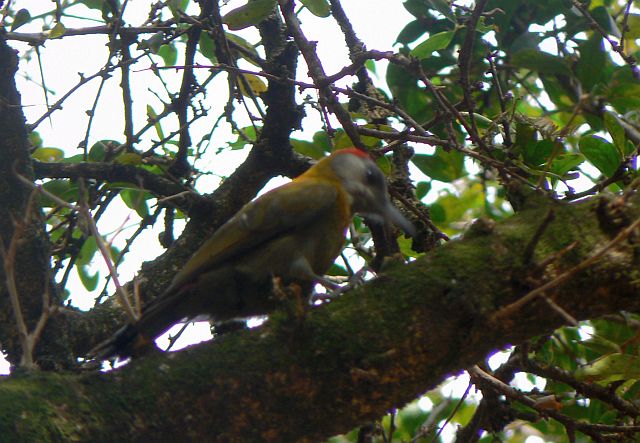 © Toko
© Toko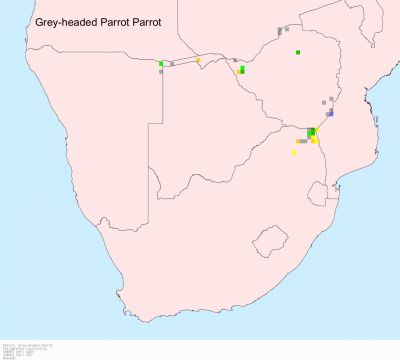
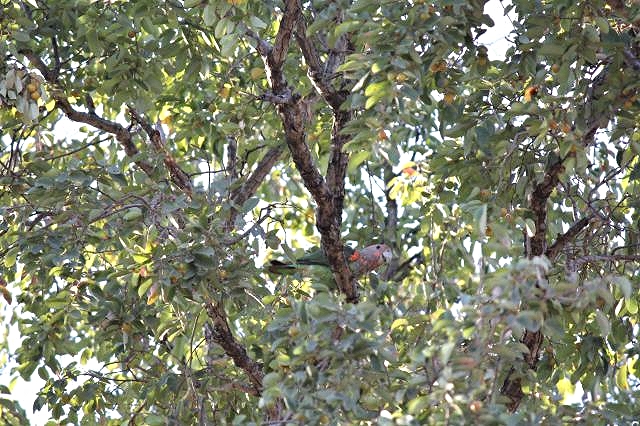 © General Gump
© General Gump 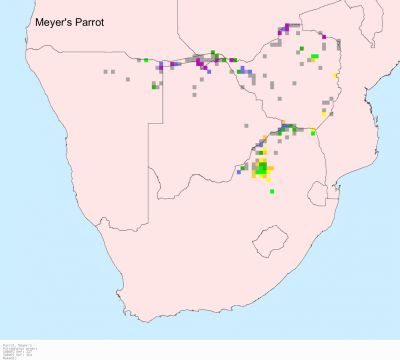
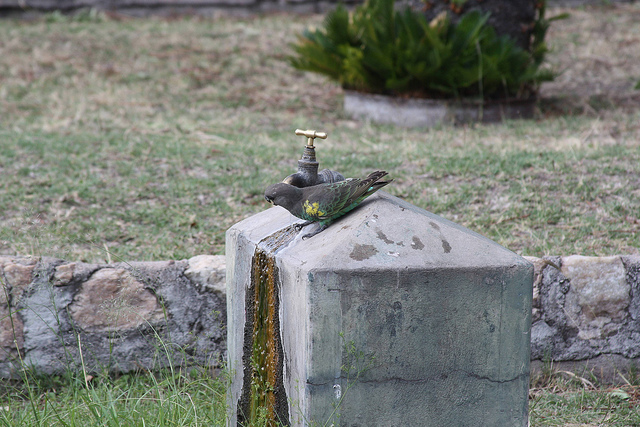
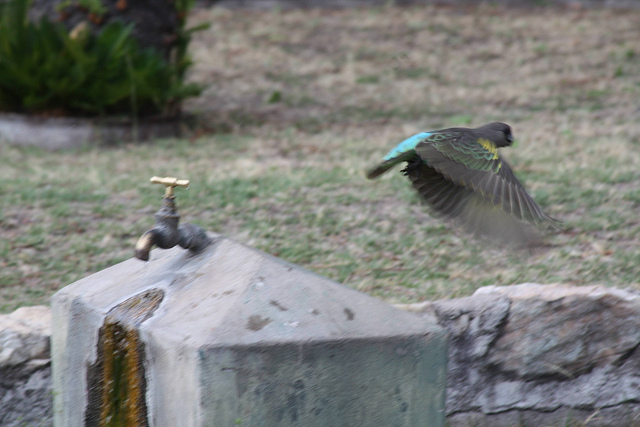
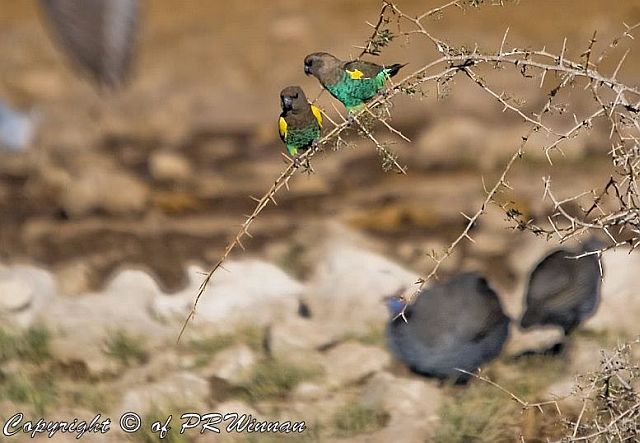 © PRWIN
© PRWIN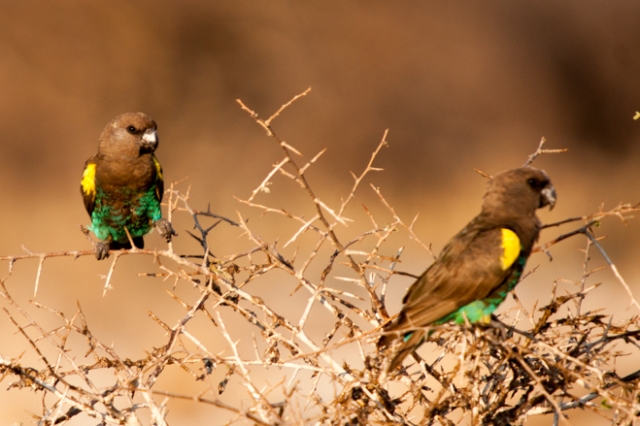 © Kesheshe
© Kesheshe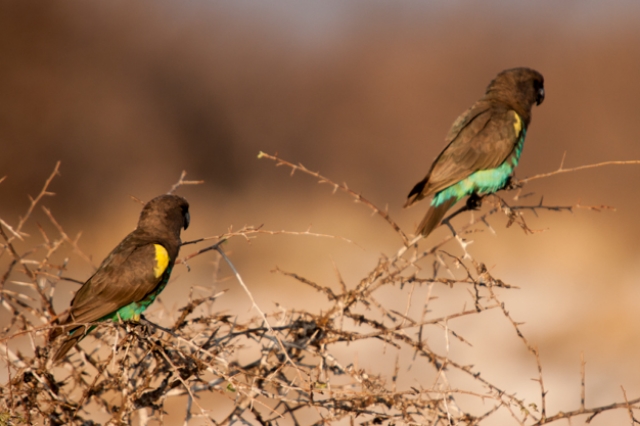 © Kesheshe
© Kesheshe